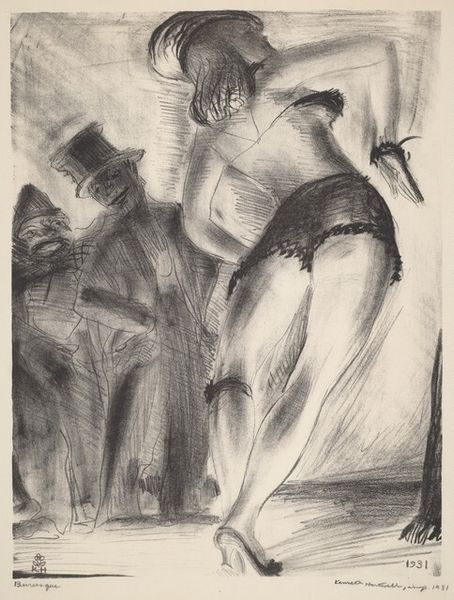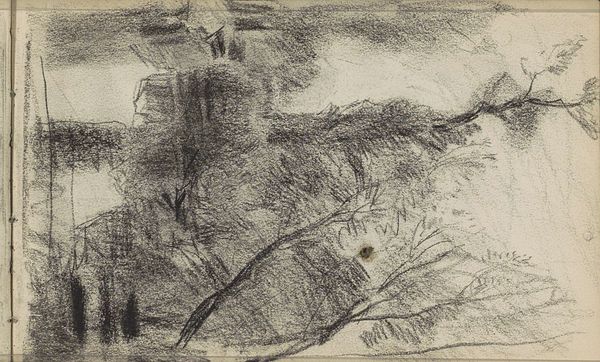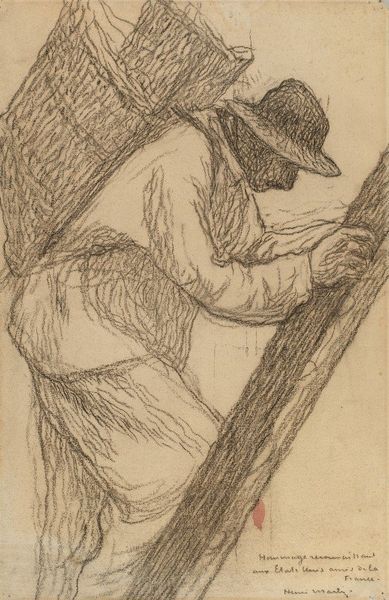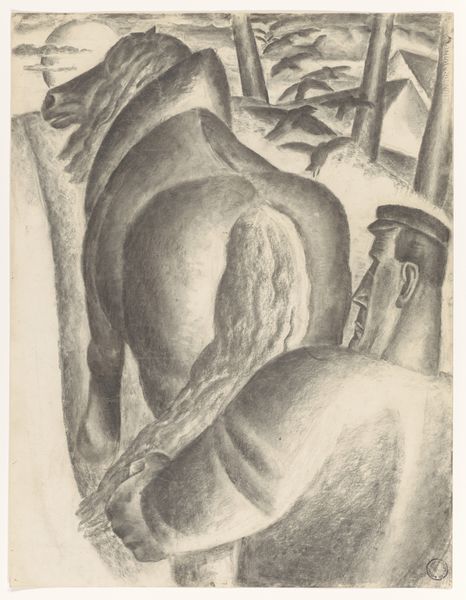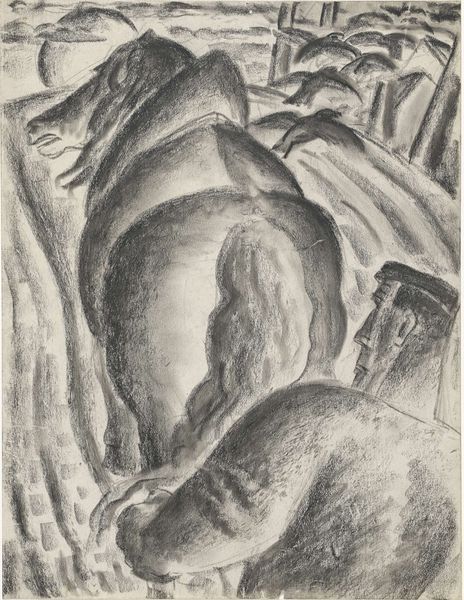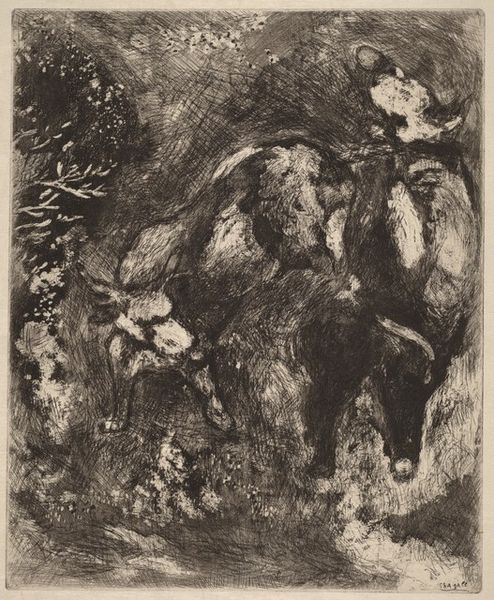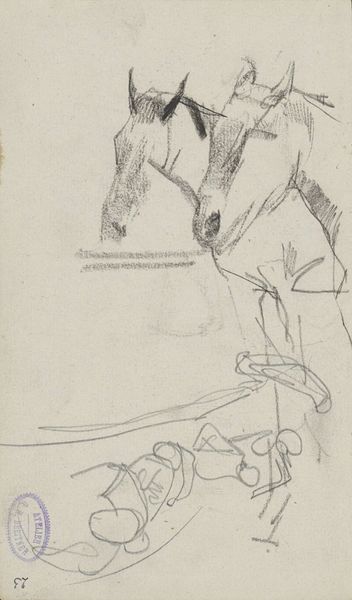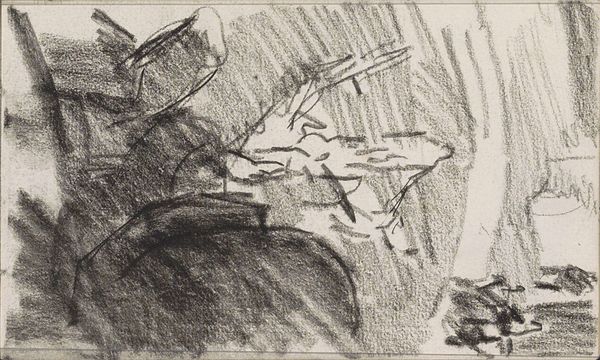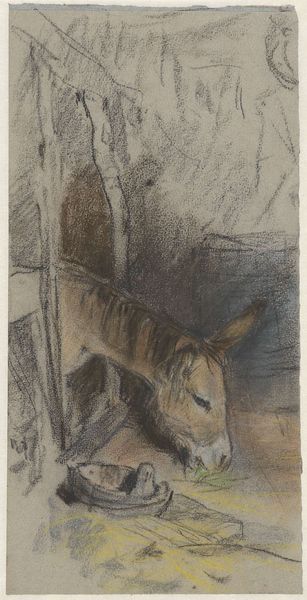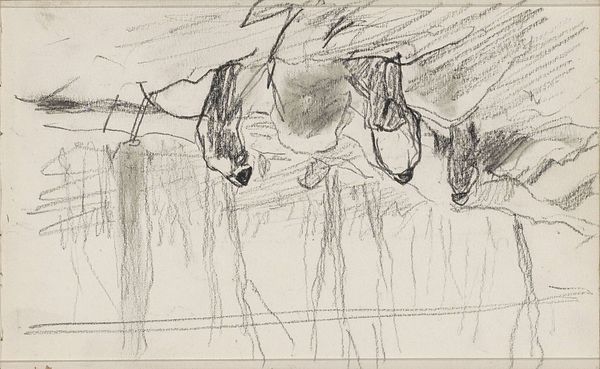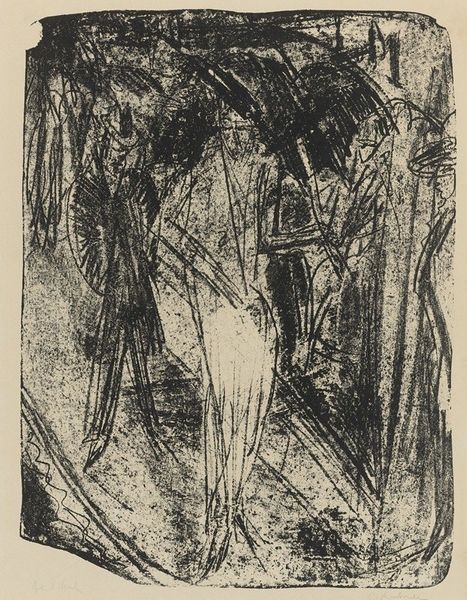
drawing, graphite
#
pencil drawn
#
drawing
#
pencil sketch
#
landscape
#
figuration
#
pencil drawing
#
expressionism
#
graphite
Dimensions: height 210 mm, width 160 mm, height 210 mm, width 160 mm
Copyright: Rijks Museum: Open Domain
Editor: Here we have Leo Gestel’s 1927 graphite drawing, “De morgen,” or "The Morning." The texture created by the graphite gives the scene a very somber, almost heavy mood, particularly the looming horse. How do you interpret this work? Curator: The weightiness you observe is quite potent, isn't it? To me, this piece speaks to the often-unacknowledged labor and struggle embedded within our cultural narratives surrounding the "morning" and new beginnings. Gestel, working in a period rife with social upheaval, invites us to consider the material realities of agrarian life, where the dawn signals not hope for all, but renewed cycles of toil. Do you see any element of social class emerging here? Editor: I guess so. There is something very vulnerable about how close we are to the horse; like we're forced to be intimate with it. Also, the farmer's body looks exhausted. Curator: Exactly! The proximity, almost an invasion of privacy, implicates us. And what about the almost brutal expressionist style? It shatters any romantic idealization of labor, foregrounding the harshness of their intertwined existences. How does this compare to typical depictions of farmers? Editor: That's true, typically artists romanticize farmers and pastoral life in general, don't they? Curator: They do, it certainly moves beyond simple observation; instead it demands critical reflection on the power dynamics present when we speak of 'progress'. Gestel encourages a perspective that goes beyond conventional landscapes into socio-political dialogues, giving prominence to those stories and voices traditionally sidelined within grand narratives. Editor: It makes me realize how many narratives I've taken for granted, I appreciate that shift in perspective. Curator: Absolutely, it is crucial we challenge what we know and explore other perspectives, looking at these visuals through lenses of diverse cultural narratives; then their powerful ability is realised.
Comments
No comments
Be the first to comment and join the conversation on the ultimate creative platform.
